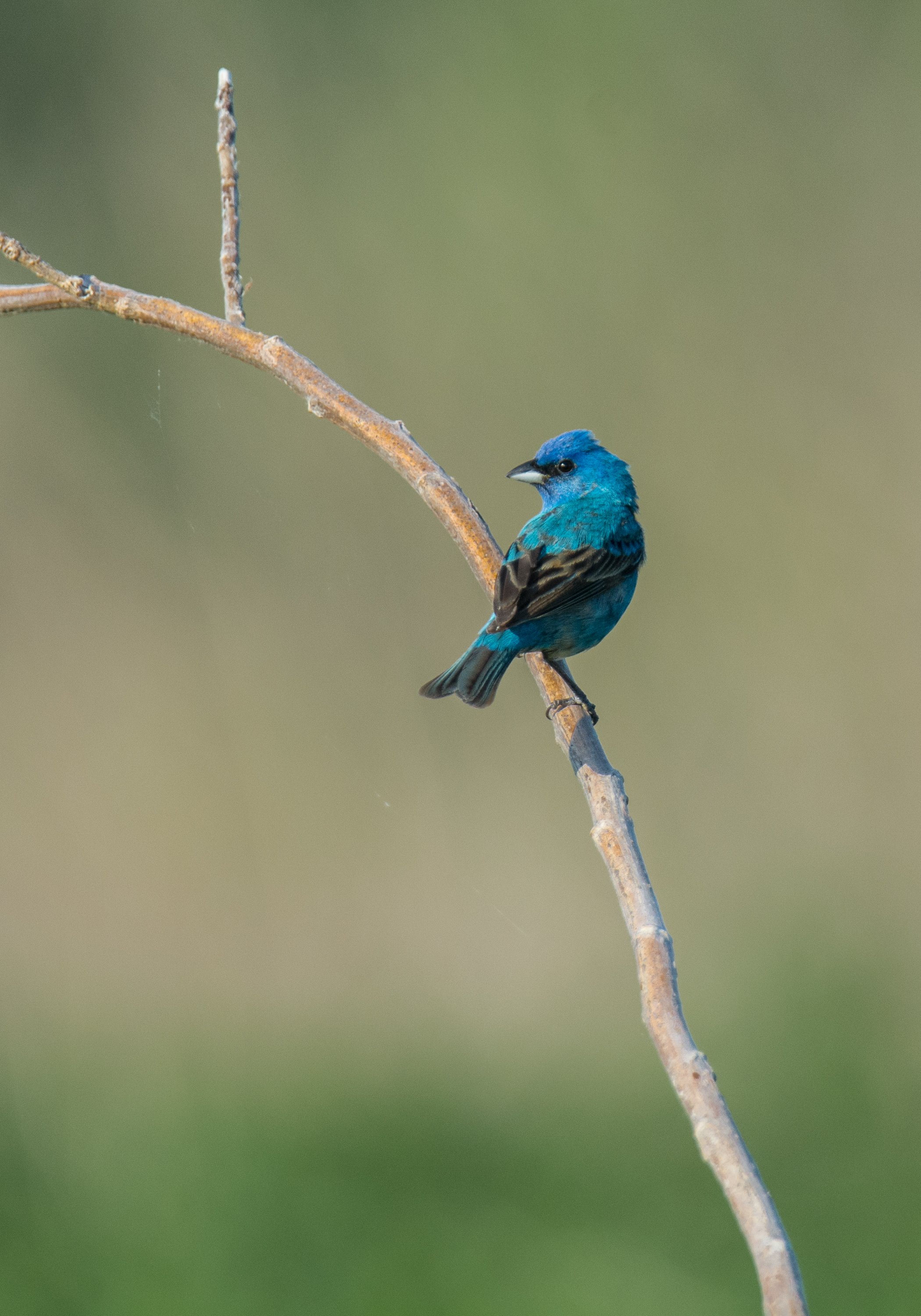Dan's Feathursday Feature: Indigo Bunting
I know, I know. A mature male Indigo Bunting in breeding plumage is nothing short of stunning. On its perch atop a tall honey locust, singing its heart out, glistening in the late morning sun like a sapphire fallen from heaven, it lives up to its description as a piece of sky with wings. But…
Yes, I also know that that dazzling indigo color is just a pigment of our imagination. In fact, the feathers of the Indigo Bunting contain not an iota of indigo pigment. Instead, there are tiny structures in the breeding male’s feathers that refract blue light, just as particles in the air refract blue light and make the sky appear blue. If that shiny blue Indigo Bunting you are watching takes wing and perches on a branch deep inside the shade of the tree, it transforms from a piece of brilliant blue sky to a dark blue-gray corner of cloud. You wouldn’t think it’s the same bird at all. I know this, but…
I know that feathers wear out. So all birds undergo a regular cycle of plumage renewal. Newborn birds start with soft, fuzzy feathers that are soon replaced by sturdy body and flight feathers. Then, at regular intervals they drop their worn feathers as new ones come in to replace them. In the case of the Indigo Bunting, this can lead to some pretty splotchy results, as males transition into or out of their blue breeding plumage. I have many unflattering photos of young male Indigo Buntings that I have stashed away, like that uncle who plans to embarrass you on your wedding day with snapshots from your high school years. But…
I know that at the start of my walk every morning of summer I can count on the resident male Indigo Bunting greeting me with its bouncing song of tangled couplets—continuing to sing until I am out of earshot. When I end my walk several hours later, he is usually still trilling away. There's a reason he is known as one of the singingest songbirds of the Midwest. I watch him change from dull brown to shiny blue as the sun comes out from behind a cloud. Brown, then blue, then brown again. I close my eyes and don’t worry about the color. It’s the song that counts—a song that is always as bright and uplifting as the rising sun itself. That blue bird never fails to sing away any blues that might be flitting around my heart. I know this, but…
I know—though my ears are not sensitive enough to detect it—that this particular Indigo Bunting is singing with a Chicago accent. Each “neighborhood” of Indigo Buntings has its own unique variation of the core Indigo Bunting song, and young Indigo Buntings learn this variation from other males in the neighborhood, not from their fathers. So, for example, if a male Indigo Bunting from New York's Central Park were to show up in the spring at this southside Chicago park and start a family, no matter how hard he might try to prevent it, his kids will end up singing wid a sout’ side aaxent.
I know all these things about the male Indigo Bunting because I am attracted to shiny objects. They catch my eye, so I learn about them. But… but can you let me get a word in edgewise about the female Indigo Bunting?
Because, you know what? The male in spring and summer may be good with the song and dance, but you do not really know the Indigo Bunting until you’ve met the female. No glitz, but plenty of glamour, to my eye. Various shades of brown, and tan, and rust. Wings and tail slightly darker than the rest of the body, and the underbelly a soft cream. Two light wing bars that add just a touch of contrast. It’s hard to wear brown well, you know. There is no dazzle to distract from the crisp profile of this impressive bird. While the blazing blue male Indigo Bunting elicits a “Wow!!”, the female makes me think “Nice.” It’s an understatedly beautiful bird.
The next time you are captivated by the color and cadence of a male Indigo Bunting overhead, enjoy it to the fullest. But remember also to lower your gaze and check the low bushes around you for a lurking female. Listen for its cardinal-like staccato chirps; watch for a bouncing branch that signals her location. If you are able to catch even a brief glimpse, I know you will not be disappointed. No buts about it.
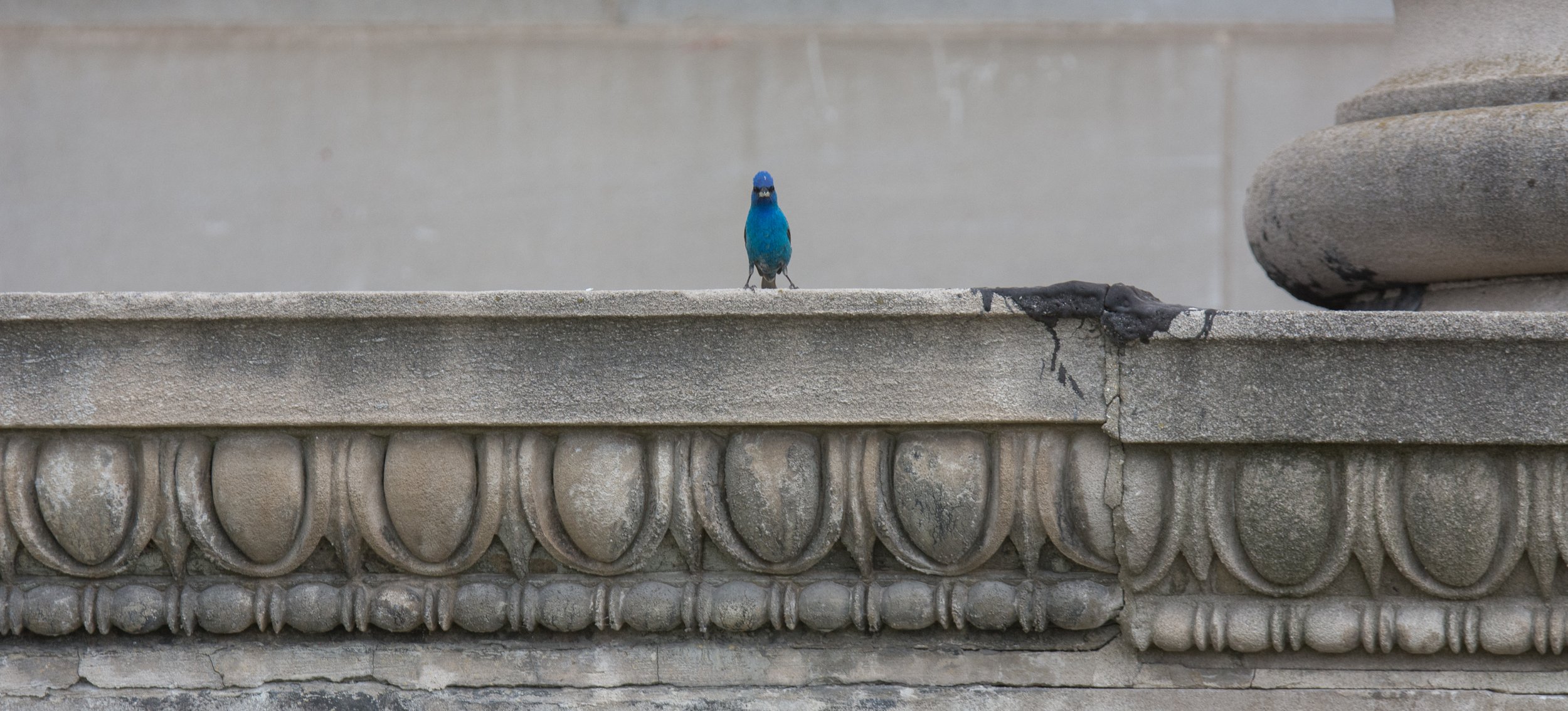
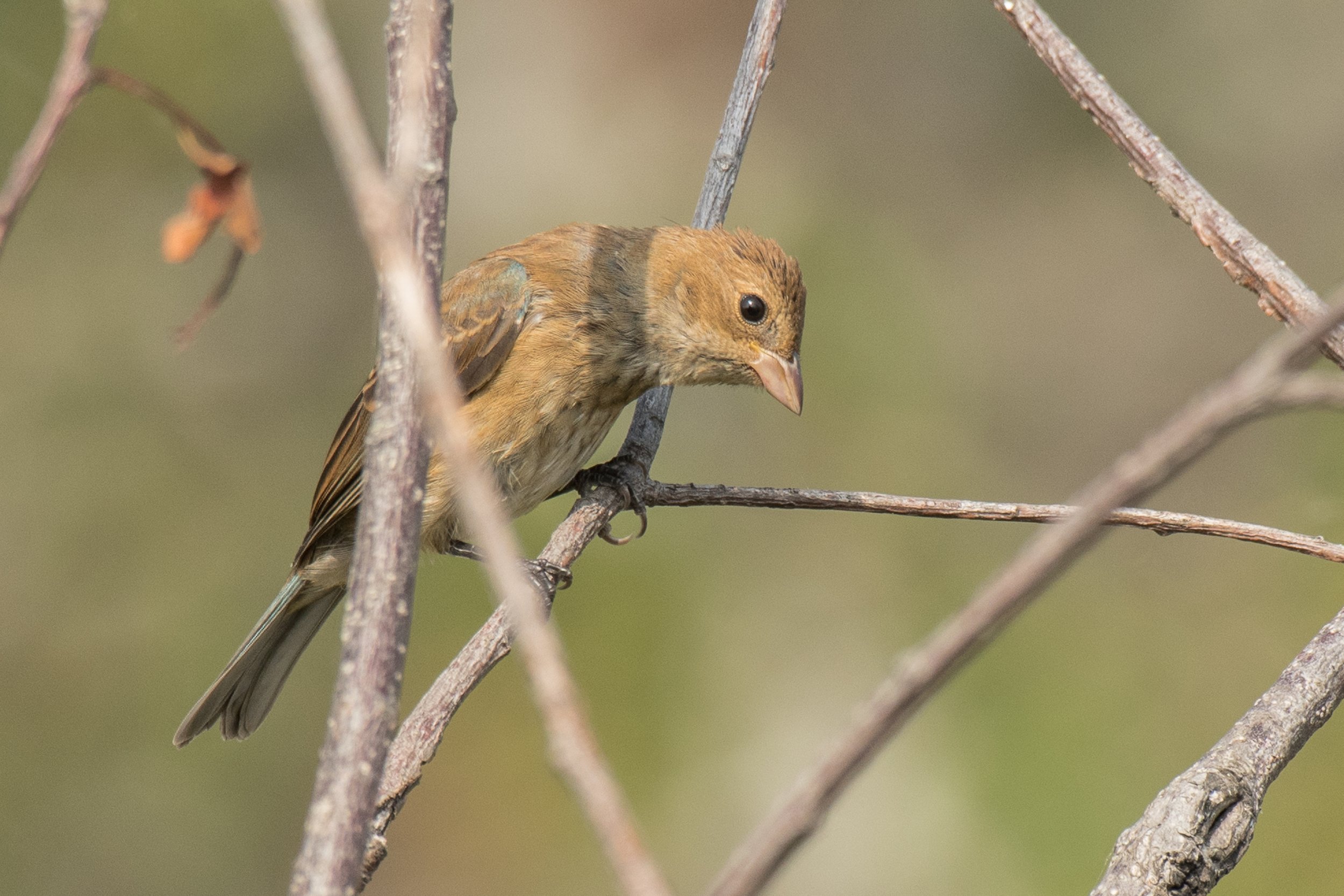
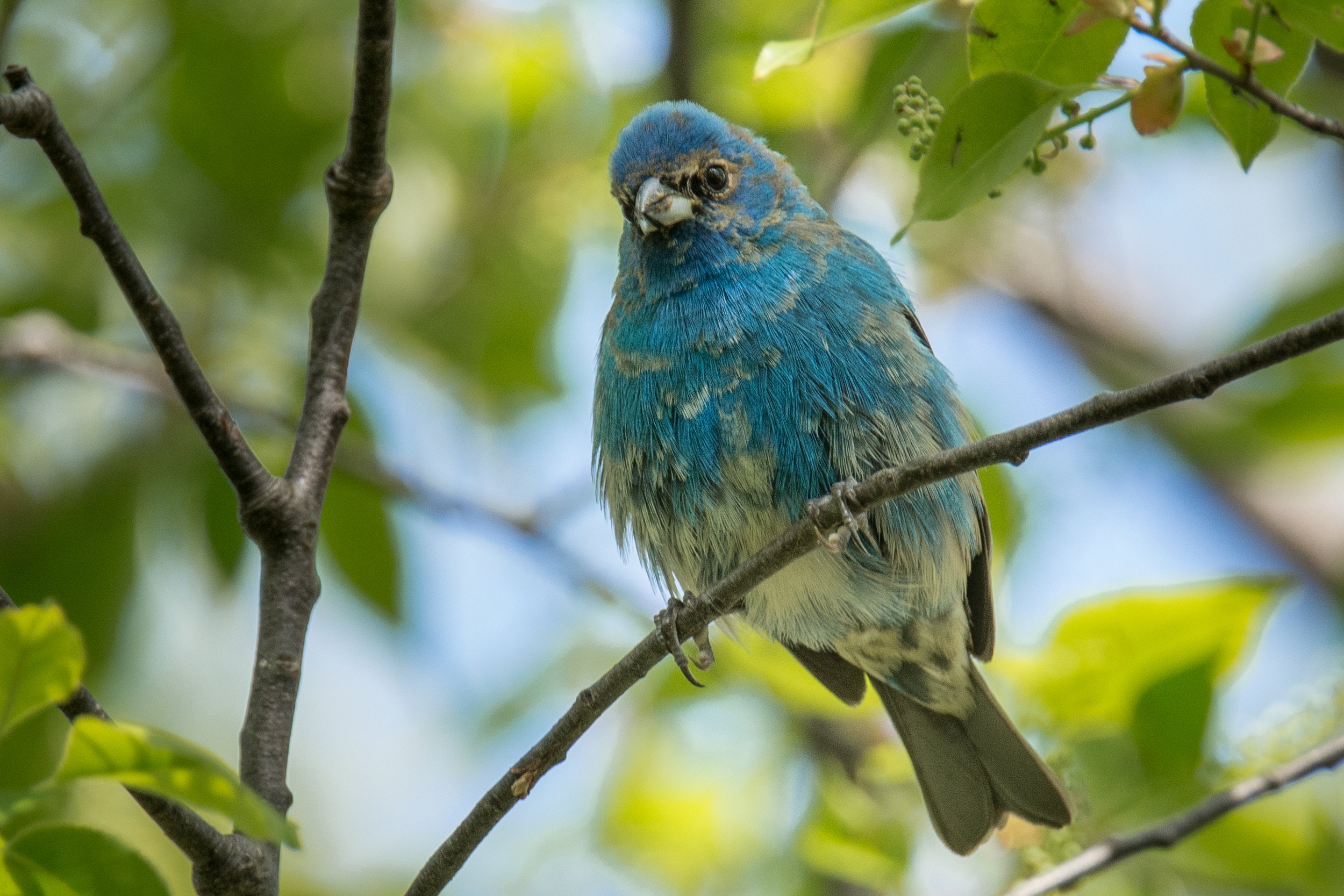
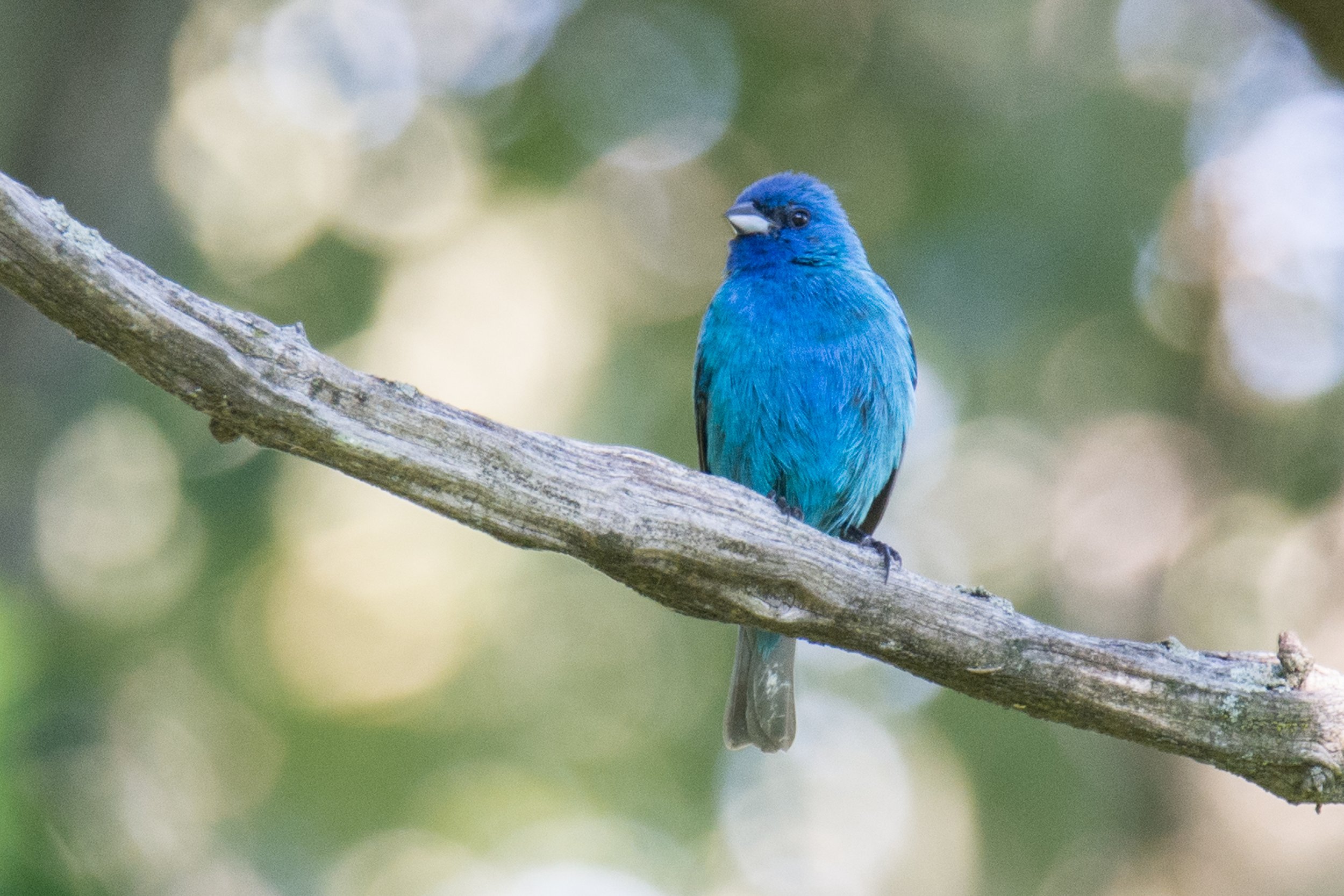
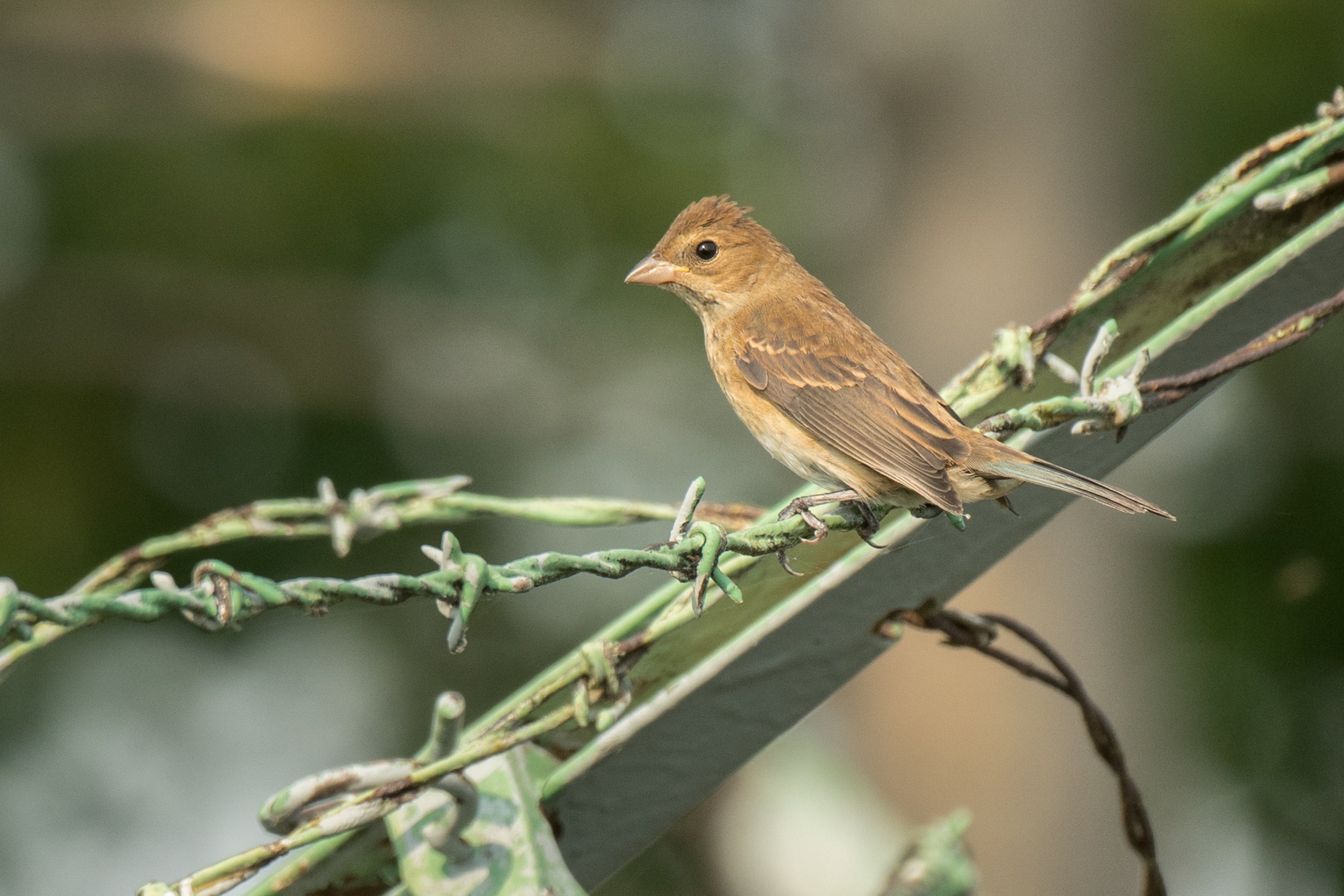
Dan's Feathursday Feature is a regular contribution to the COS blog featuring the thoughts, insights and photography of Chicago birder, Dan Lory on birds of the Chicago region.




